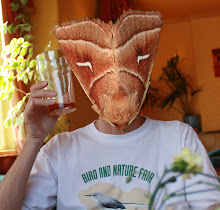The Borers of Wilson...

Whilst down at Wilson Tract on Thursday we had the great pleasure of catching a nice selection of borer moths in the genus Papaipema. These fantastic moths mostly fly from late August to mid October, with early September being the peak for many species. The larvae bore into the stems, roots and rhizomes of a variety of herbaceous plants. Some are restricted to just one plant whereas other species are generalists.
They really are prized moths and are a treat to catch and look at. However, some species can be frustratingly difficult to identify. I'm pretty sure most of these are correct but...
Having said that, the above species is pretty easy, is Papaipema baptisiae. It is quite large and smooth-looking and has a nice string of large silvery orbicular spots and wide, broken mosaic edge to the reniform. I've just lent out some of my books so cannot give you the host plants for some of these moths!

This one is Papaipema birdi. It is smaller and paler than baptisiae and shows paler, cream-colored scales at the base of the forewing. Also, the reniform spot is distinctly larger - usually just touching the pm line.

This one is Papaipema leucostigma, the Columbine Borer Moth. It is pale orange and usually has reduced orbicular spots and just a trace of white fringing the reniform spot.

Next we have Papaipema pterisii, the Bracken Borer Moth. Similar to lecostigma but note the orbicular spots are fused, or almost so. The larvae are heavily into munching on bracken...

This one was from a previous visit and was remarkably early - had never seen a borer in July before! It is Papaipena nebris, the Stalk Borer Moth. This is one of the darker species and usually, well, the ones I've seen anyway, has dark and inconspicuous orbicular and reniform spots. The white antenna and white speckling along the costa near the forewing apex are apparently distinctive. The larvae are generalists on many plants.

We caught three of these and are having trouble identifying them. Rather small and distinctively marked we figured they would be easy - ha! It is possibly Papaipema rutila - but will have to do a bit of research...

Another dark species, we think this is Papaipema nelita. The warm brown saddle and reasonably large spots seem to indicate this species. Could be that the jagged-edged pm line is distinctive?

And finally an easy one - about time! This is Papaipema inquaesita, the Sensitive Fern Borer Moth. Is pretty common and widespread, I've even caught it once in my back yard! Sandpapery orange with darker veins and sharply angled lines and no obvious spots - easy. The larval foodplant is rather predictably sensitive fern.
I do have photos of a few other species, but I think eight is enough for one post... Nice though eh?















